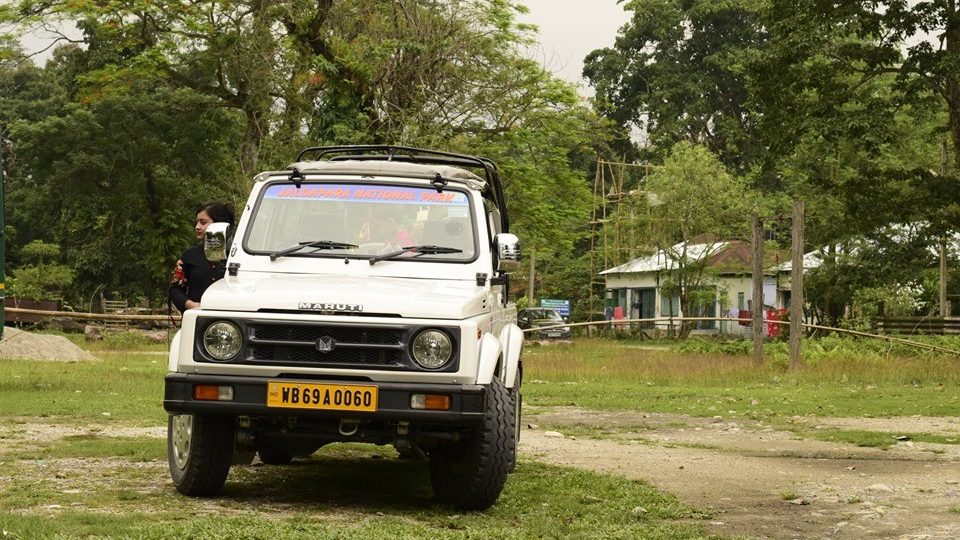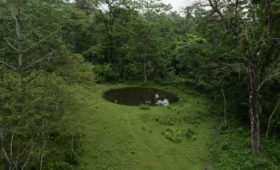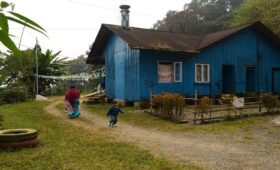Is it really worthwhile to visit Jaldapara in the month of May-June?
I will narrate my experience about Jungle Safaris in the month of May-June when the rainy season is knocking at the door. The blog focus on Jaldapara National Park but I have jotted down my thoughts below based on my experiences during jungle safaris in the forests of Dooars in month May-June.
Route map of Jaldapara Safari :
At Jaldapara National Park Jeep Safari is operated from two gates-
- Madarihat Gate.
- Salkumar Gate.
The safari vehicle goes through the forests and grasslands and there are three stopovers-
- Hollong.
- Harindanga Watchtower.
- Jaldapara Watchtower.
Tourists can get down of the vehicle at the above spots and enjoy wildlife sightings from the watchtower. Otherwise, it is not allowed to get down in foot in the park during the safari.
Jaldapara Safari Begins :
I reserved Jeep Safari for the last slot. Safari is for 1 and ½ hr (from 4.00 pm to 5.30 pm). At 4.00 pm, it was already very dark and the light was dying out. (From 1st May 2019 Jungle Safari duration has been reduced from 2hr to 1 and 1/2 hr).
Our first stopover was at Hollong Bungalow, a female gaur was busy licking at the salt-leak. The jungle in the backdrop was lush green.
We headed for Harindanga Watchtower. The habitat around Harindanga primarily consists of grassland. “Harin” in Bengali means “Deer”. As the name suggests, this watchtower is known for deer sightings. We were not disappointed. There were two Hog Deer’s resting at about 100 meters from the tower. It gets its name from the hog-like manner in which it runs through the forests with its head hung low so that it can duck under obstacles instead of leaping over them like most other deer. The species is Endangered as per IUCN.
After Harindanga we drove towards Jaldapara Watchtower. As we were about to reach Jaldapara Tower, a female Sambar Deer was peeping out its head from the bushes. There is a salt leak at the watchtower. This watchtower is frequented by Wild Boars.
Recently 15 Sambar Deer’s were relocated to Buxa Tiger Reserve from Jaldapara National Park, to provide enough ample food for the Tigers to be released at Buxa.
As we left from Jaldapara Watchtower it started to drizzle. We put on the soft hood of the gypsy to escape from the rain. All gypsy vehicles are provided with soft hoods.
Pros of Monsoon Safari :
- The popular belief is that during monsoons sightings are less but guides and naturalists at Jaldapara have a different version. Contrary to the popular belief, they believe that leopards and other wild animals walk more on the roads (due to long grass) during monsoon and also since the scent gets washed away, they roam around scent marking more often during monsoon.
- Jungle lives during monsoon. The beauty of the jungle during monsoon is indescribable in words. And if you are one of those who doesn’t mind getting a bit wet in order to witness nature at its best time to visit Jaldapara National Park.
- Lush green background gives a soothing tonality to the photographs.
- Monsoon time it the mating/breeding time of most of the wild animals/birds and provides the opportunity to capture love-making moments of wild animals.
Cons of Monsoon Safari :
- As the grass becomes long and the forest is absolutely green, it becomes difficult to spot wildlife, if they are deep inside the jungle.
“What makes a wildlife reserve winning is when the dark clouds grumble bring in heavenly rain to wash away the earthy dust. Yes! It is during this season when the ground smells of petrichor.”








